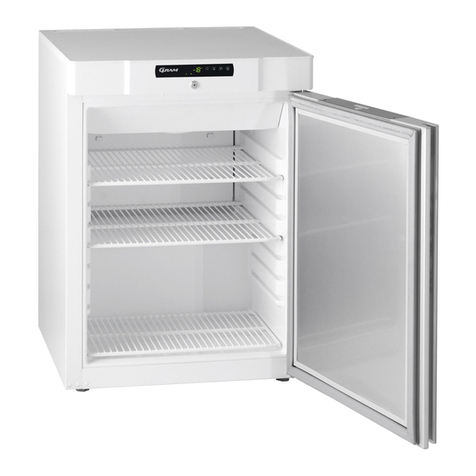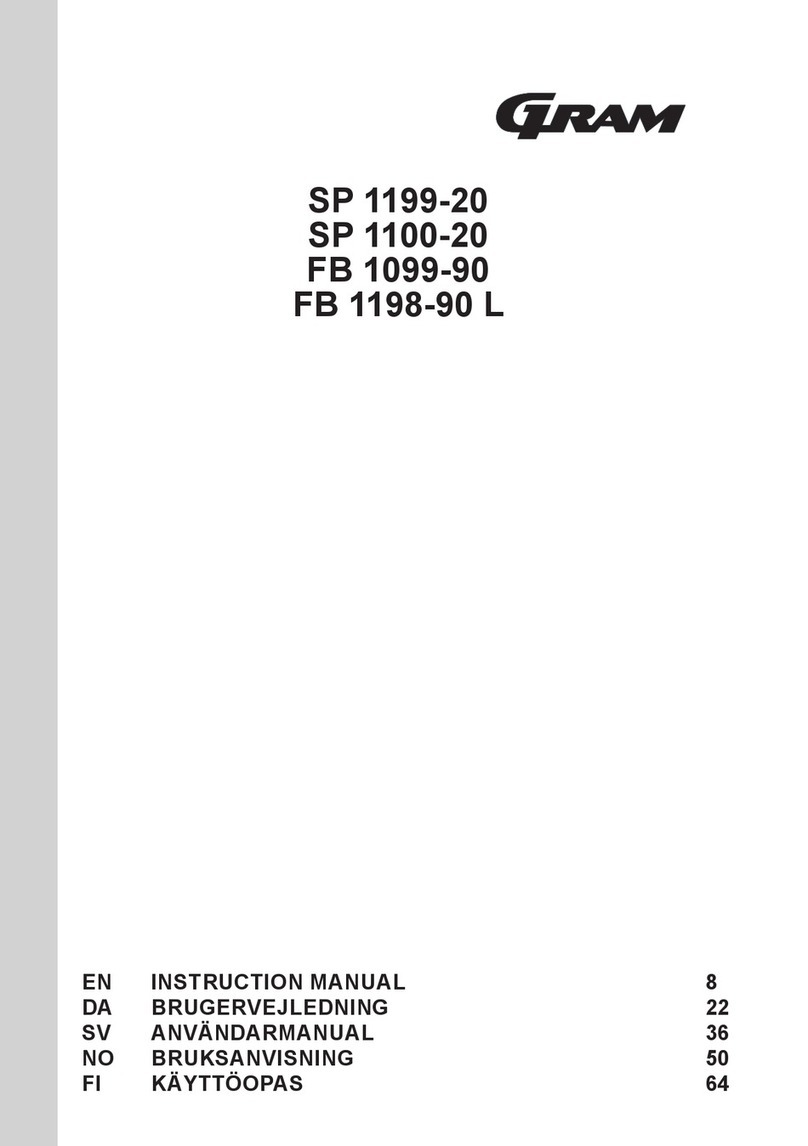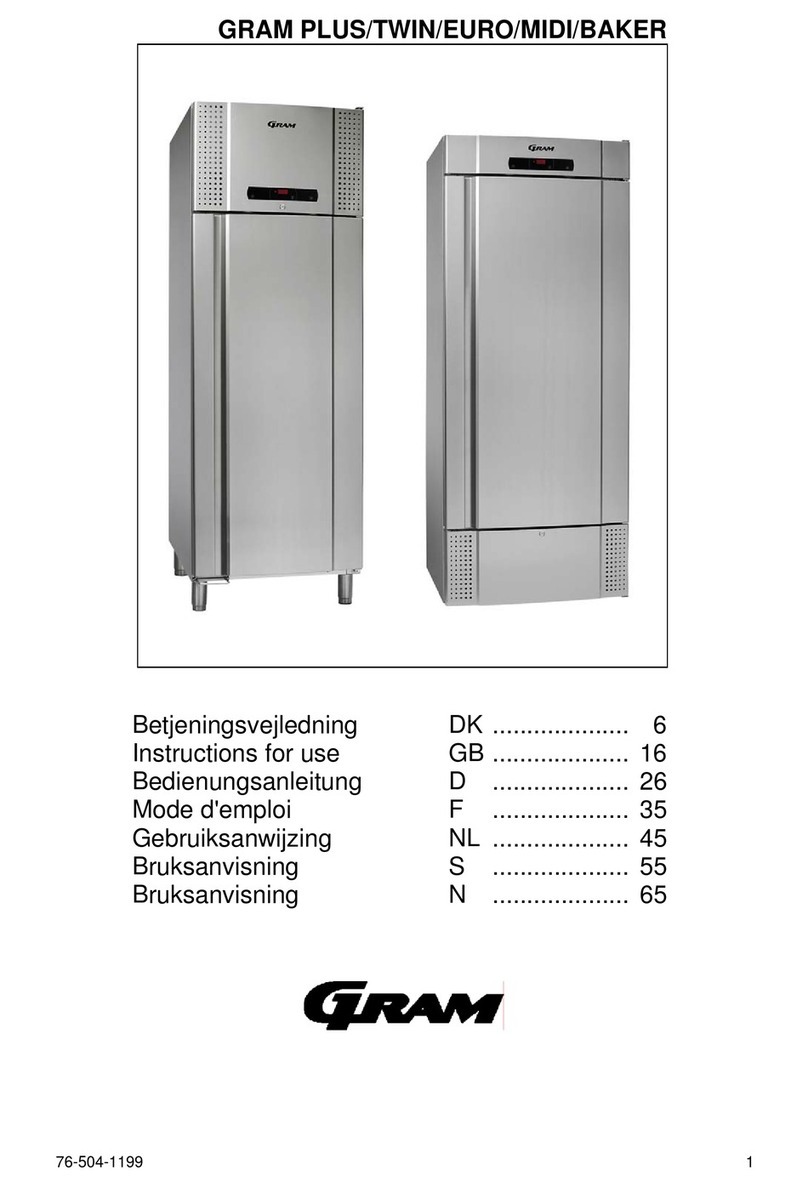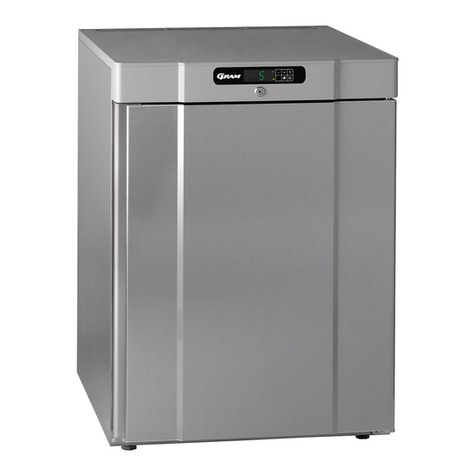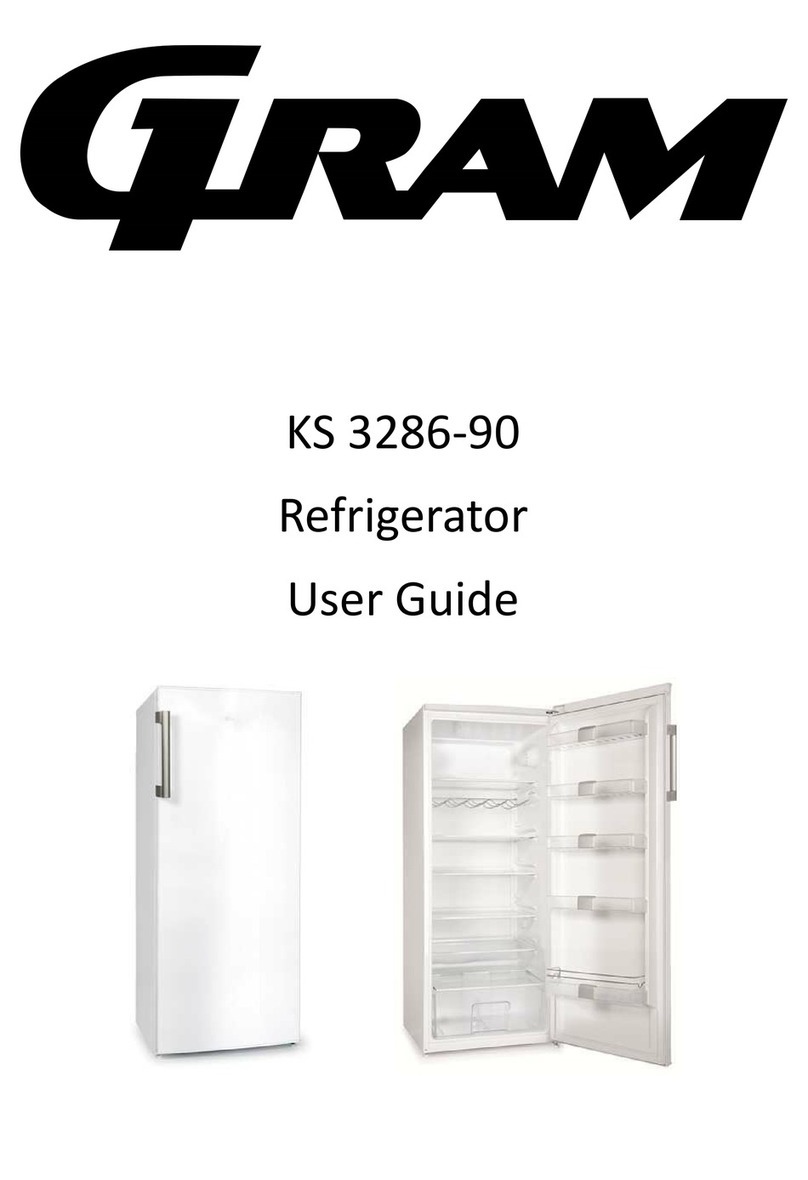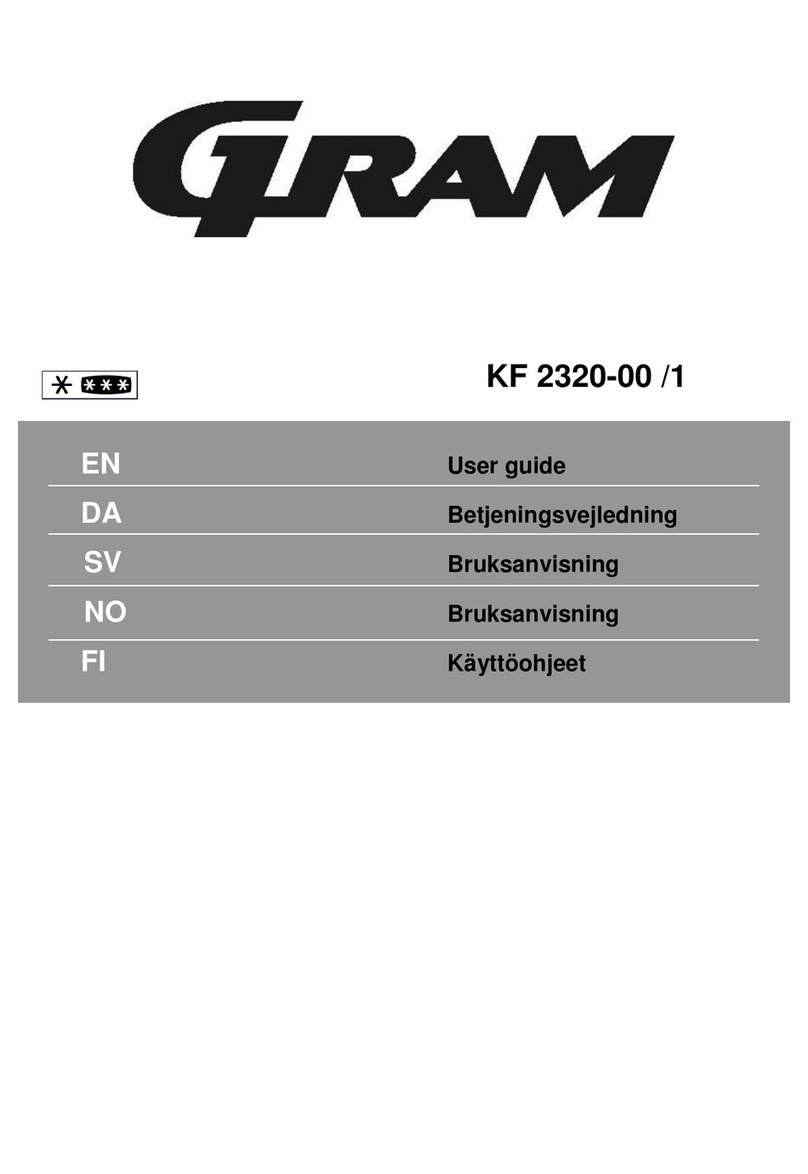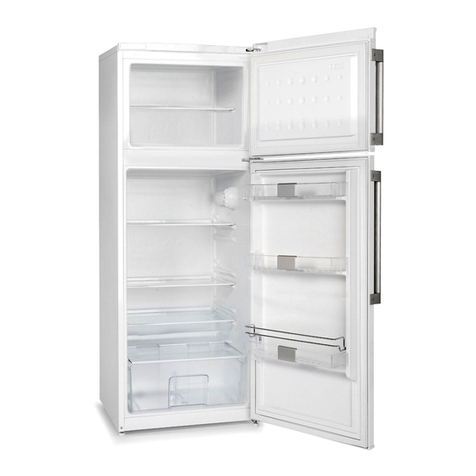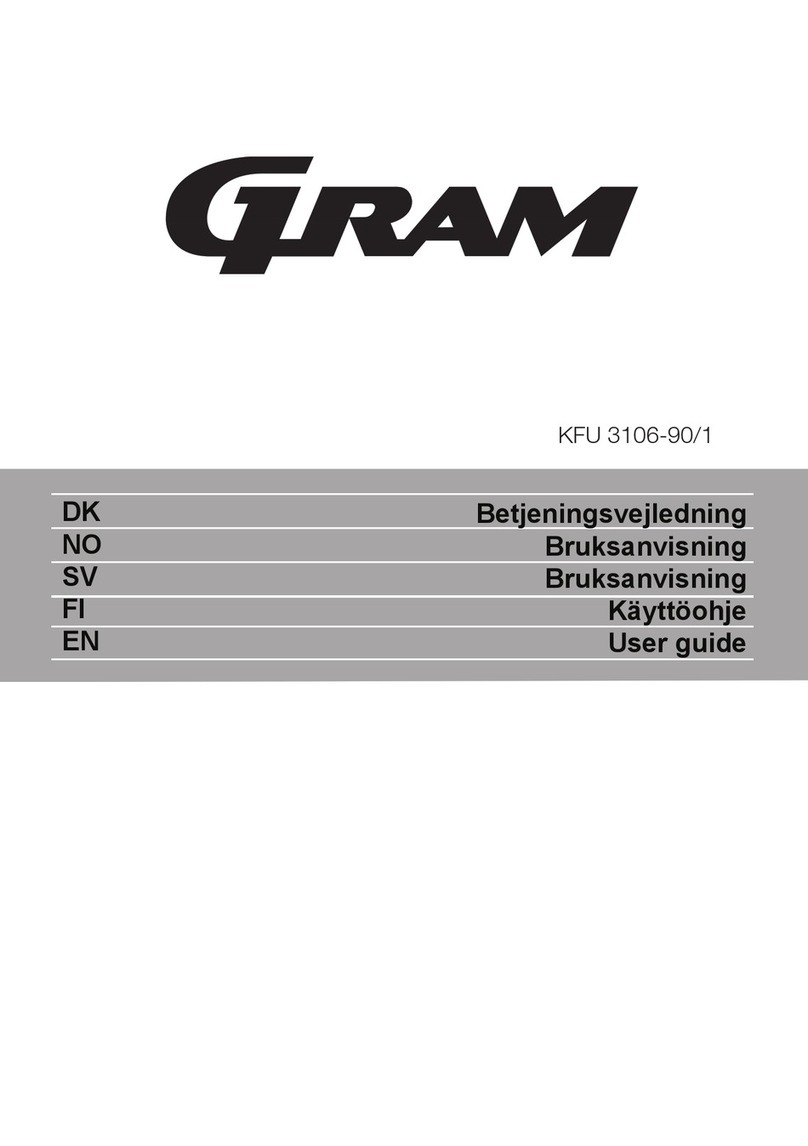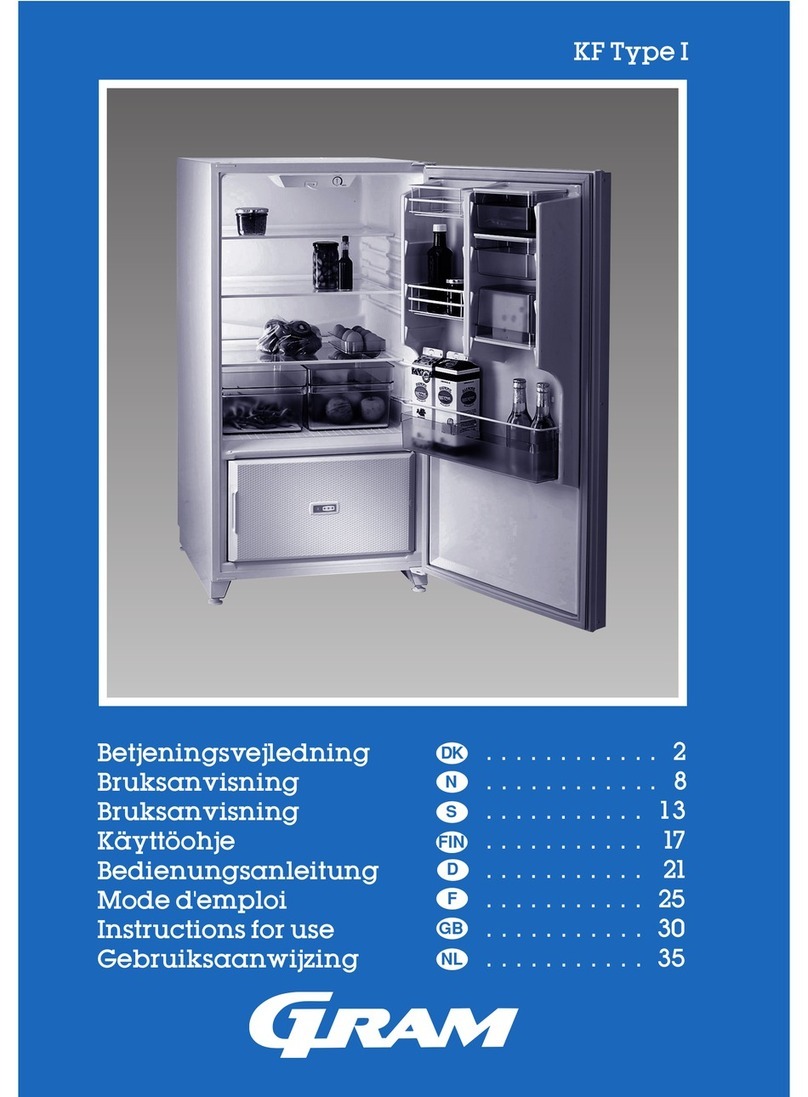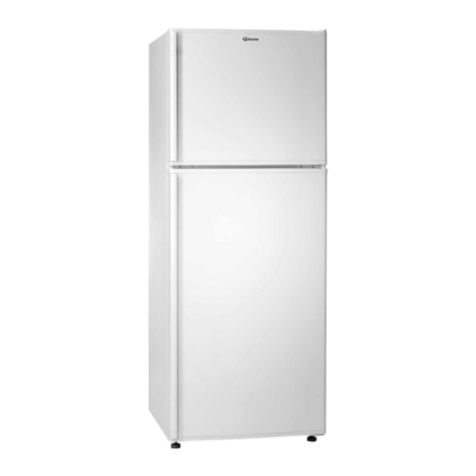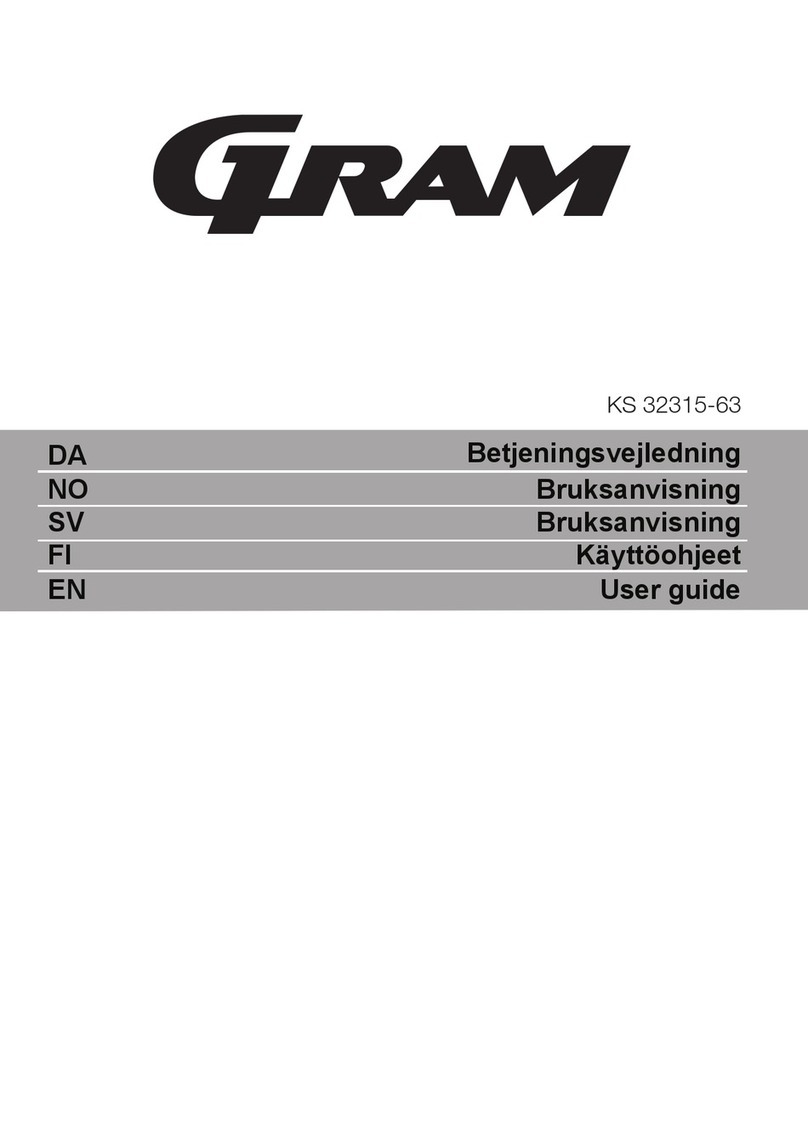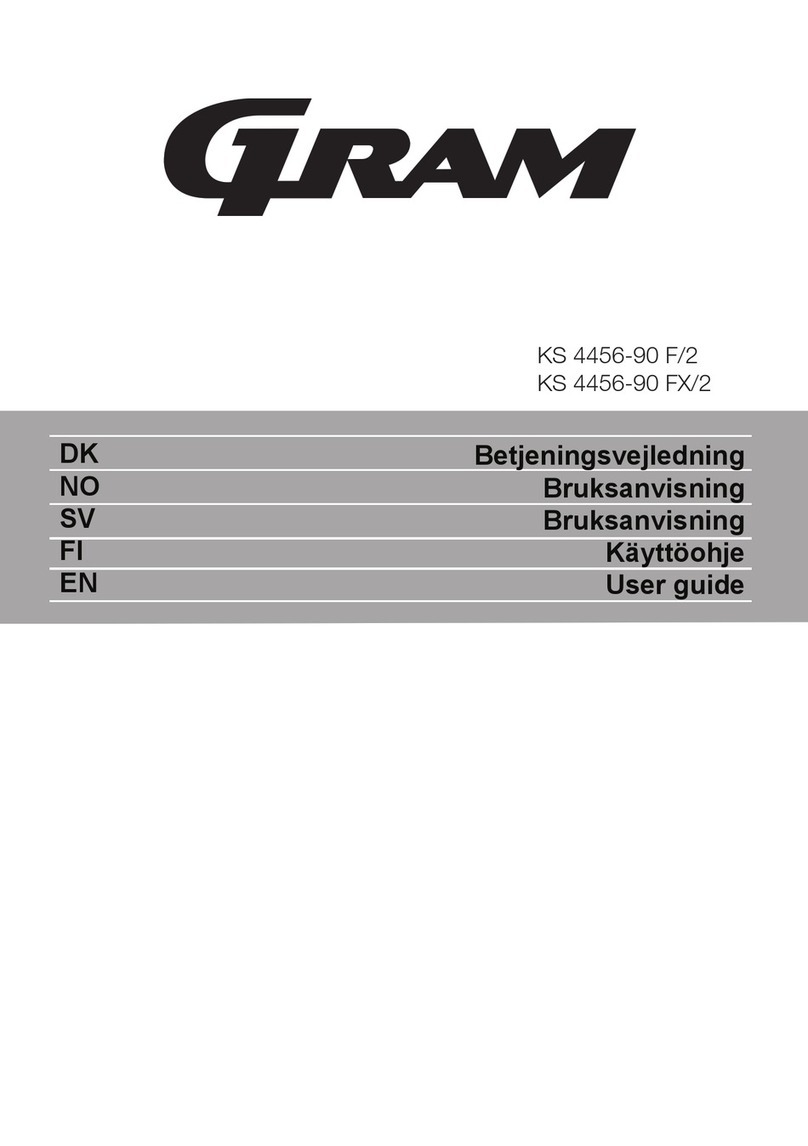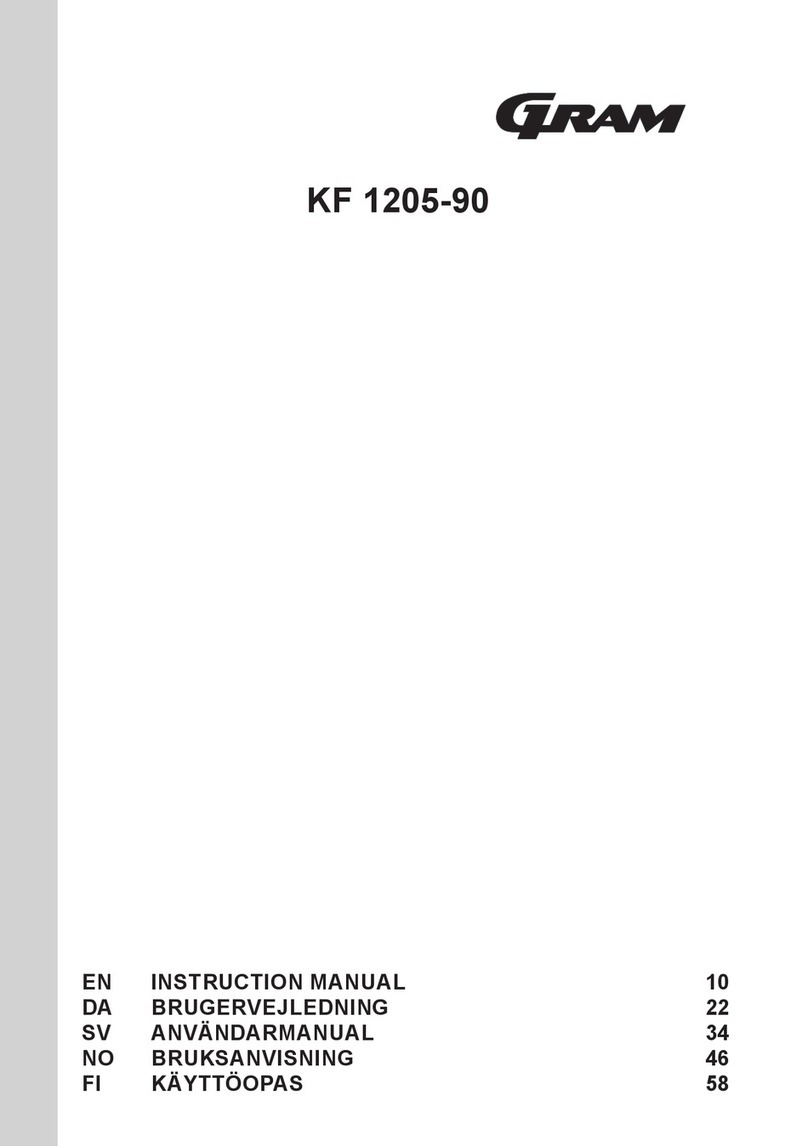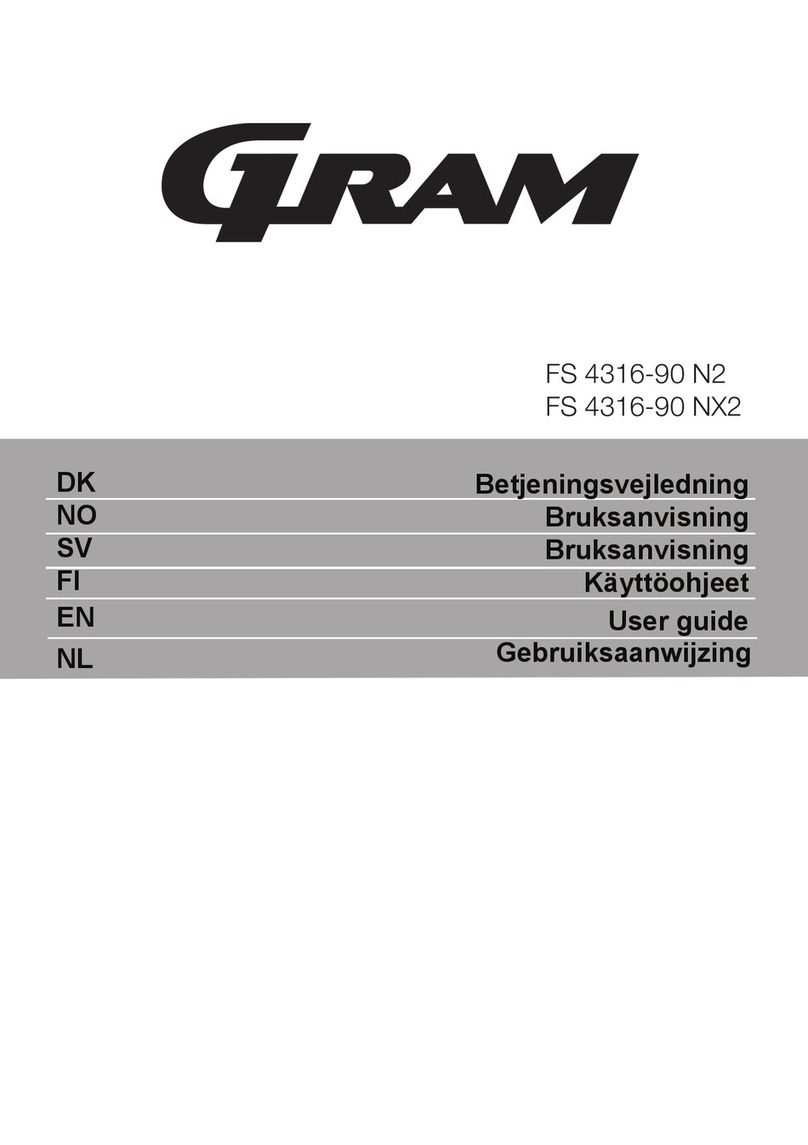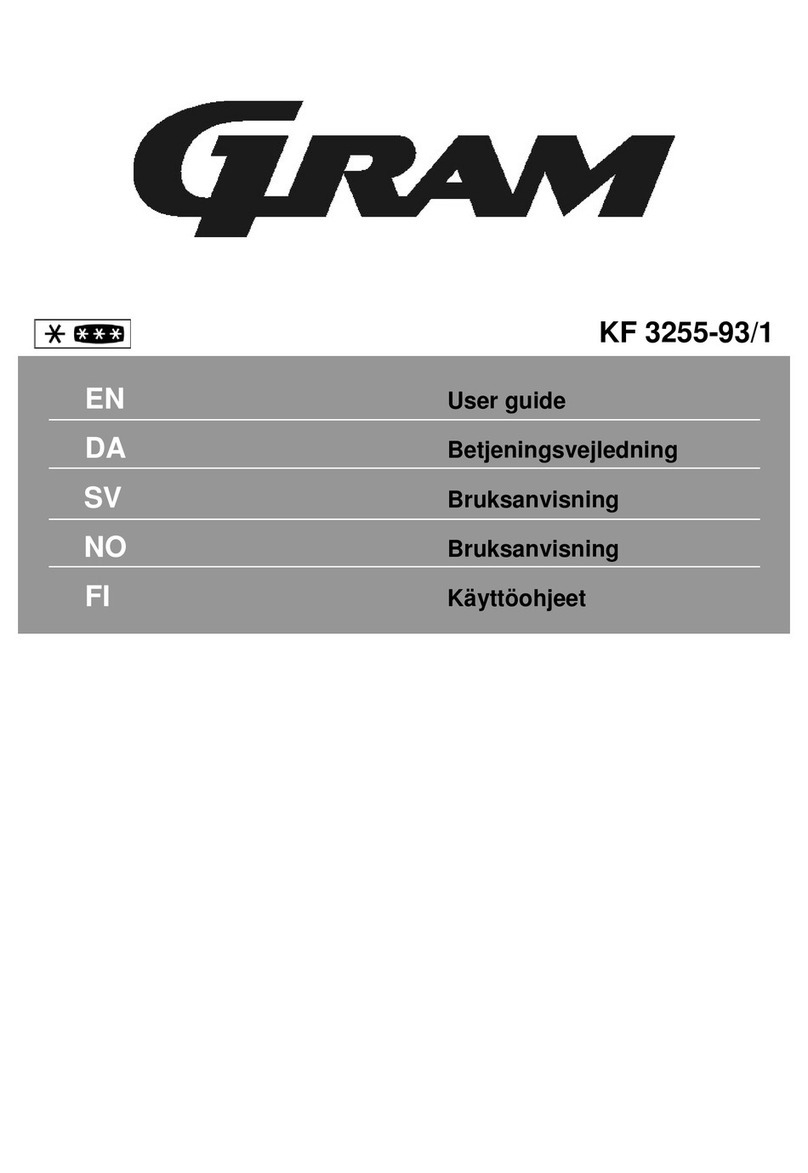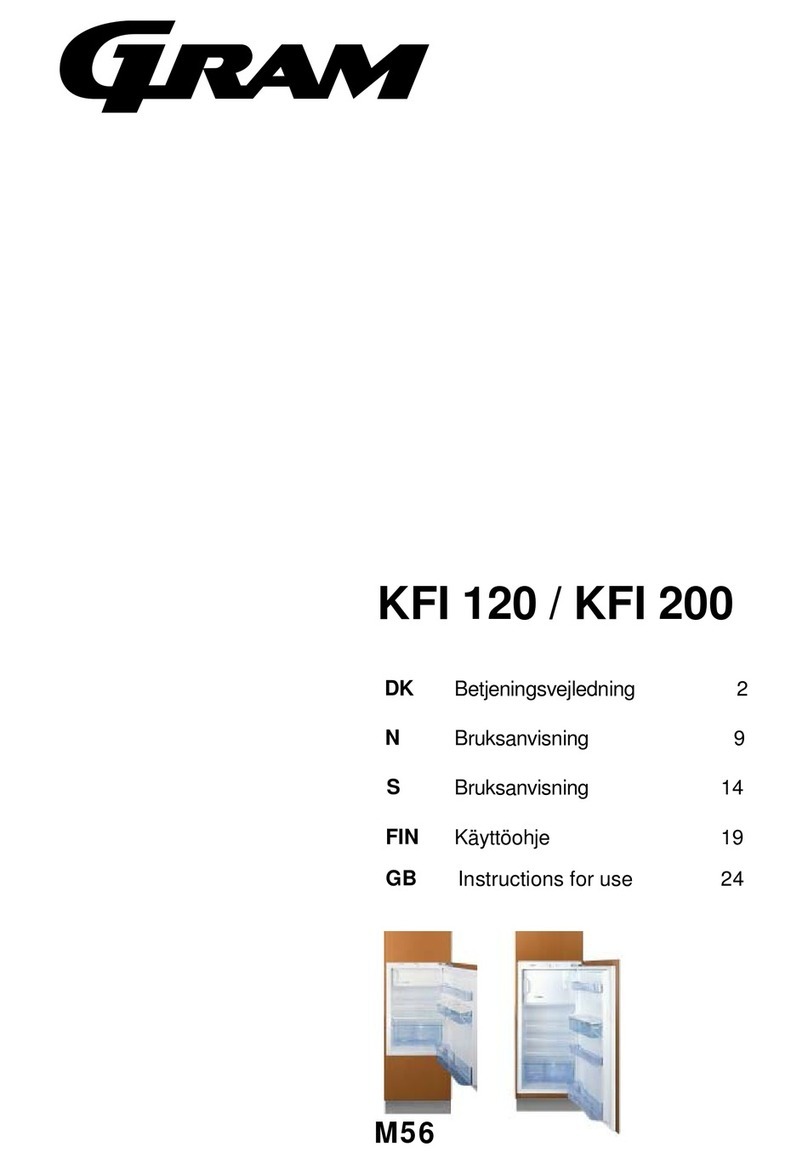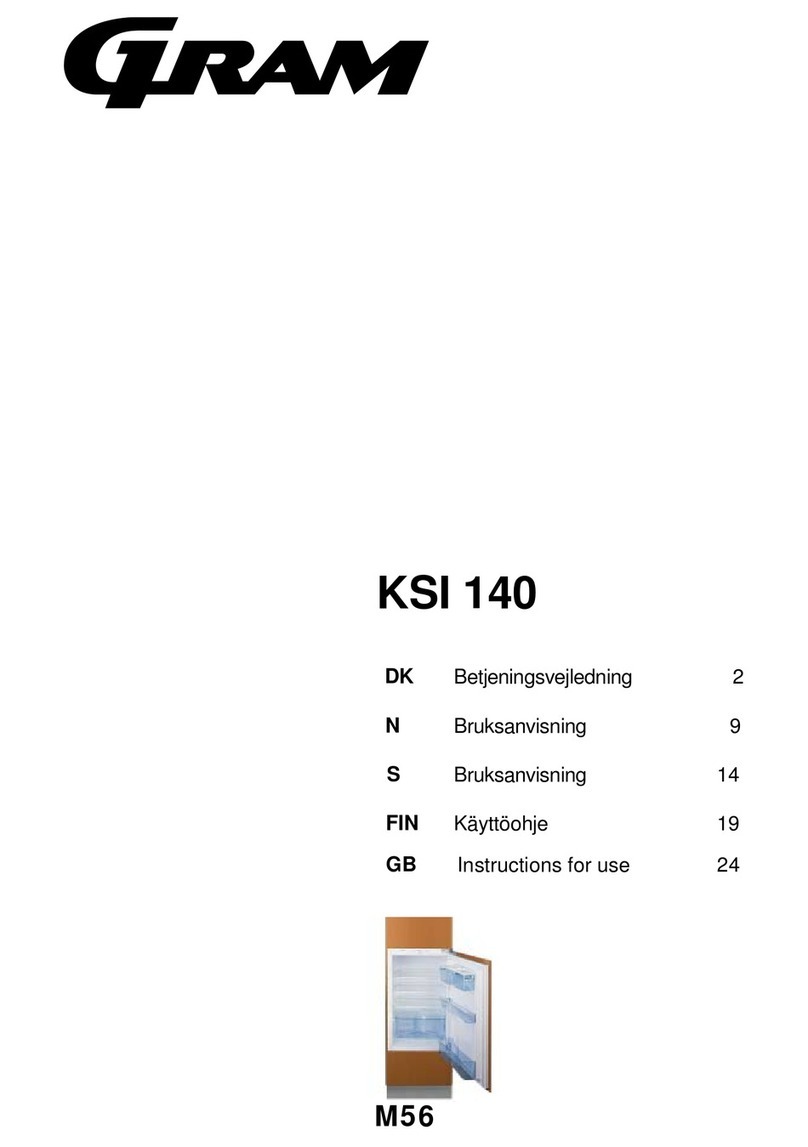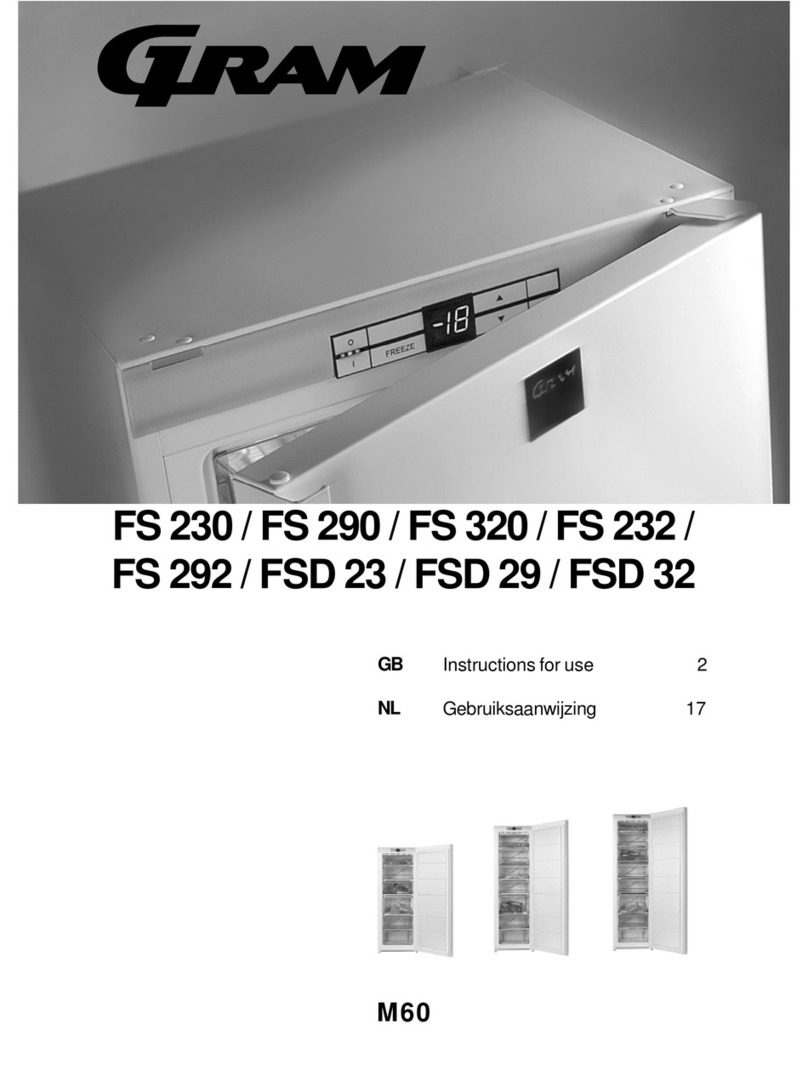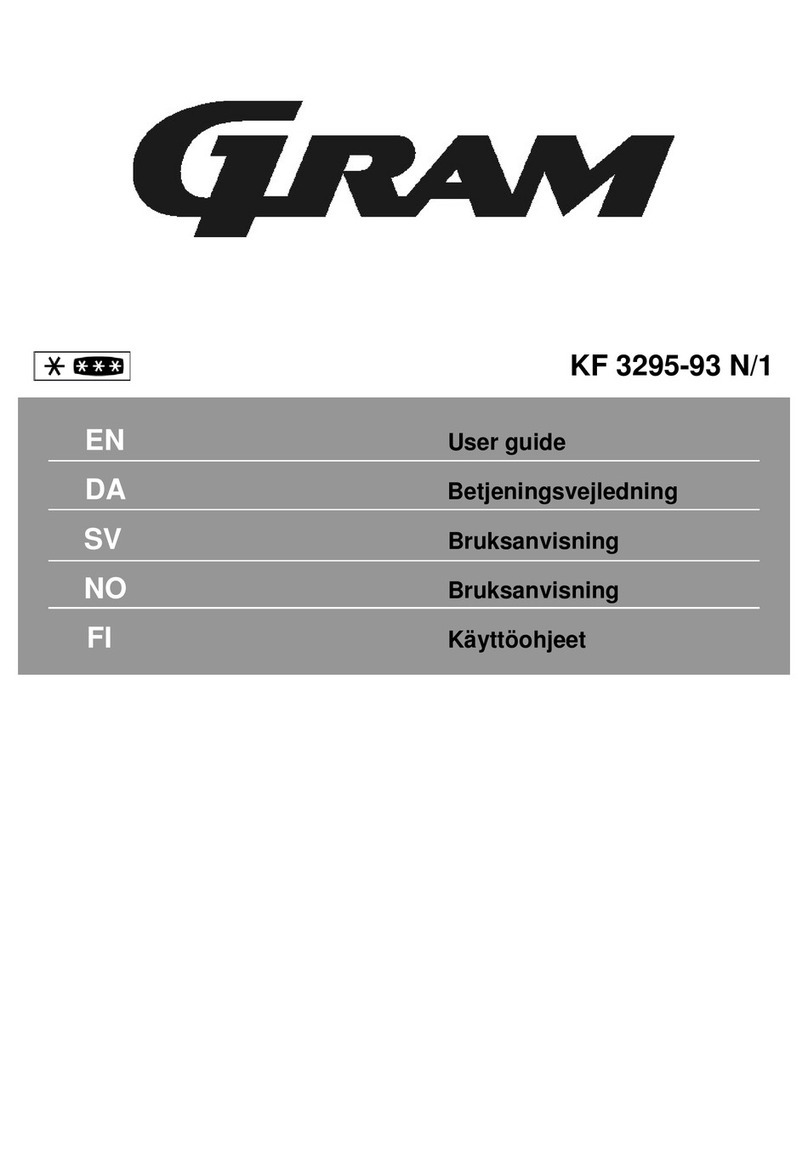
EN
4
2Important Safety Warnings
Please read through the following
information.If this information is not
followed, personal injury or material
damage may occur and all warranty
and reliability commitments will
become invalid.
Intended use
use.
not appropriate to use it outdoor even
if the place is covered with a roof.
General safety
product, we recommend you to
consult the authorized service in order
to get information on disposal and
available facilities.
questions and problems related to the
refrigerator.
materials should never be used in
connection with the cleaning and
defrosting of your refrigerator. In such
cases, the vapor might get in contact
with the electrical parts and cause
short circuit or electric shock.
refrigerator such as the door as a
support or a step.
the freezer.
where the refrigerant is circulating,
with drilling or cutting tools. The
refrigerant that might blow out when
the gas channels of the evaporator,
pipe extensions or surface coatings
are punctured may cause skin
irritations and eye injuries.
holes on your refrigerator with any
material.
must only be made by qualified
unqualified people may cause a risk
for the user.
repair,disconnect your refrigerator’s
mains supply by either turning off the
relevant fuse or by unplugging your
appliance.
the plug.
contain flammable gases (e.g. spray)
as well as explosive materials must
never be kept in the appliance.
or other means to accelerate the
defrosting proces, other than the ones
recommended by the manufacturer.
doubts.
covered by the guaranteebe covered
by the guarantee if the earth system in
your house complies with standards.
